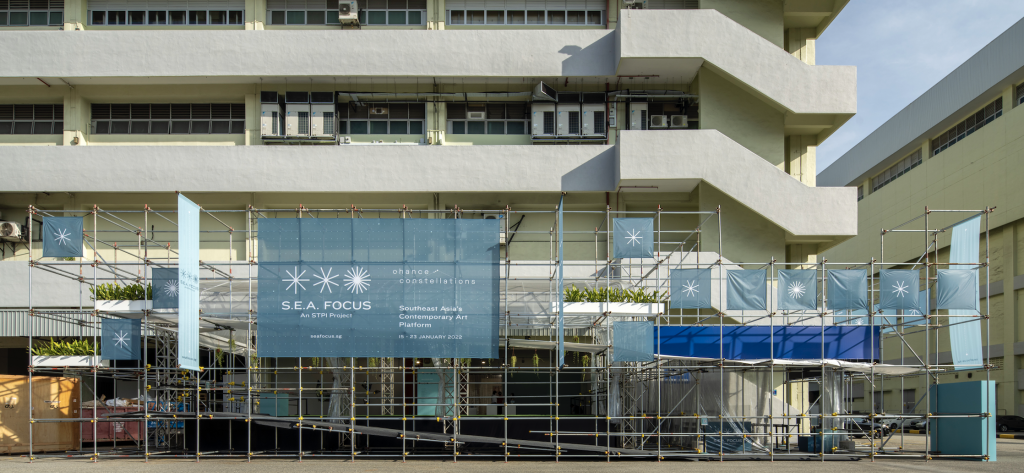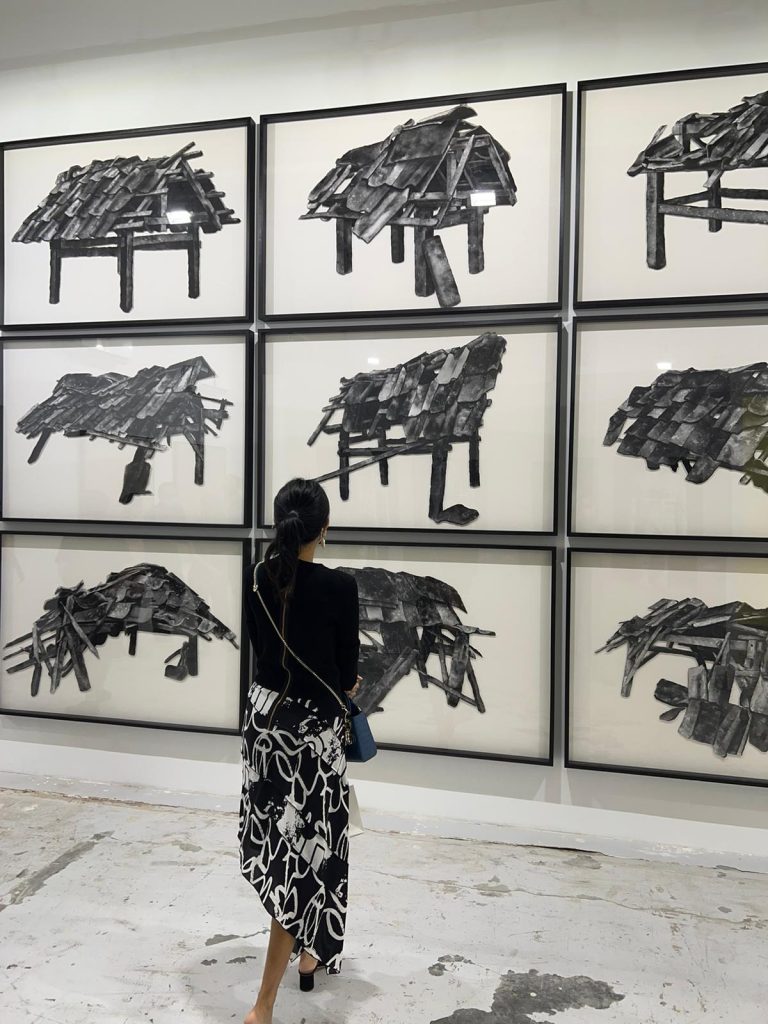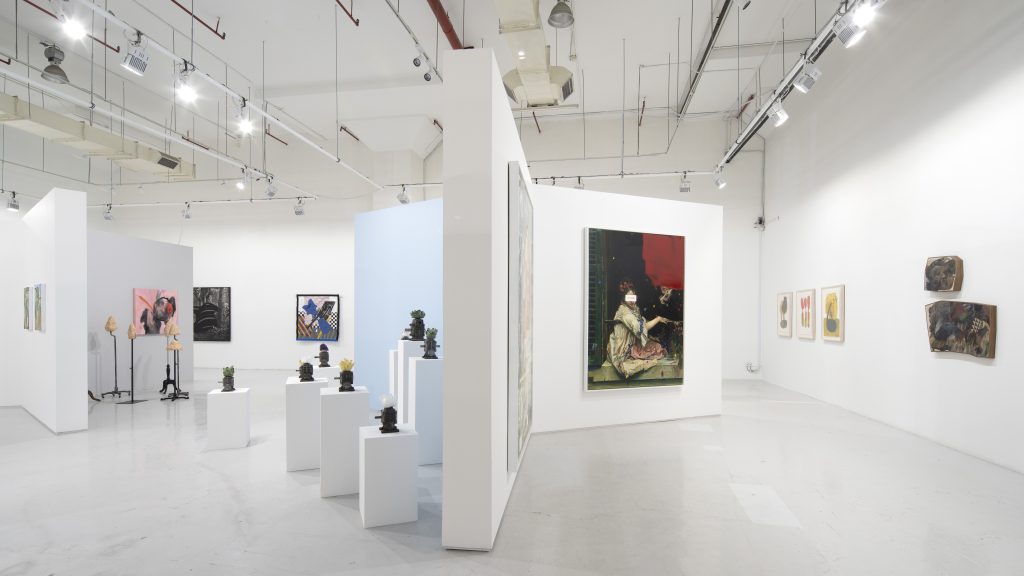Artnet News Pro
Singapore’s S.E.A. Focus Art Fair Is Trying to Woo Young, Crypto-Rich Collectors. But the Buying Is Slow Going
The government-backed fair returns to attract a younger generation with NFTs and artist-made films.

The government-backed fair returns to attract a younger generation with NFTs and artist-made films.

Vivienne Chow

Getting to Singapore may not be easy right now due to the recent surge in the Omicron variant, but the contemporary art fair S.E.A. Focus will still go on for those who are able to make it.
With a longer run and an NFT exhibition debut, the boutique fair focusing on Southeast Asian art has found a new, young local audience. “We have a lot more visitors compared to last year, a lot of young people. They are in their late teens, early to mid-20s, and just out of school,” said Emi Eu, executive director of STPI Creative Workshop and Gallery and project director of S.E.A. Focus.
The prominence of younger audiences at this year’s fair has brought a dynamic change to the city state’s taste in art. “There’s a shift of preferences in the art medium,” Eu noted. “The entrance of digital art, NFTs… they have been in the news and they are very appealing. Young audiences are looking for works that are much more digitally engaging.”
Since its inception in 2019, the government-backed fair—or platform, as the organizers prefer to call it—has been playing an increasingly instrumental role in the region’s art scene, despite its tiny size. This year’s edition, which opened to VIPs on January 13 and runs until January 23, features 24 galleries and more than 150 artworks by 50 artists from around the region. With an extended run for a second year in a row the show hopes to “give everybody in the island the chance to visit us,” Eu said.

Pessimism is Optimistic III (2017) by Nadiah Bamadhaj, A+ Works of Art. Photo courtesy of Nathaniel Gunawan.
The fair’s location at Tanjong Park Distripark in Keppel Road has proved to be a boon for the show. It is now adjacent to the newly opened Singapore Art Museum, which transformed the former warehouse into a new art destination. The space was inaugurated with new shows featuring the immersive installations REFUSE, by The Observatory, an experimental band based in Singapore; and A Machine Boosting Energy into the Universe by the Thai-born, U.S.-based artist Korakrit Arunanondchai.
While the lineup includes homegrown Singapore galleries such as STPI, Yeo Workshop, Yavuz Gallery, Gajah Gallery, and Art Porters, as well as overseas galleries that have spaces in the city-state, such as Sullivan and Strumpf, The Columns Gallery, and Ota Fine Arts, the fair also sees the participation of key galleries from around the region, including the Jakarta-based ROH Projects; Wei-Ling Gallery and A+ Works of Art from Kuala Lumpur; Nova Contemporary and Bangkok CityCity Gallery from the capital of Thailand; CUC Gallery from Hanoi; Silverlans, Artinformal, and The Drawing Room from Manila; Tropical Futures Institute from Cebu. Hong Kong’s Edouard Malingue Gallery and Neugerriemschneider from Berlin also present.
Works are presented revolving around the theme of “chance… constellations,” as a curated exhibition rather than a typical fair divided by gallery booths. Prices of the works on show start with $650 and go up to around $75,000, according to Eu. The accessible price points, especially for sculptures and works on paper by young artists from Southeast Asia, are hoped to encourage art buying among a younger crowd. Few sales have been reported as of yet.
“The works are very tactile-oriented,” Eu said. “The visual language can be very jarring to those who are not familiar with this region, but that’s their attraction and uniqueness. Southeast Asian art has always been undervalued from the market perspective, which is about supply and demand. The intrinsic value is there.”

Inside S.E.A. Focus 2022. Courtesy of S.E.A. Focus 2022.
“I felt this year’s S.E.A. Focus genuinely embraced the plurality and diversity of art making in Southeast Asia,” collector Nathaniel Gunawan told Artnet News. Gunawan, an entrepreneur and film producer, is also on the board of STPI. He added that he has already shortlisted the works he is interested in, but has not yet made any purchases.
“Although the fair shows that there is no single overarching Southeast Asian style of art making, I think it is still important to recognize the effects of local geographies and communities on the artists and their practices,” he said. “Though I would not say these factors necessarily dictate their practices, they do add some unique and layered nuances.”
New additions to the physical art exhibitions are the fair’s first showcase of NFTs and a film program. The film program takes place at a pop-up screening room, Projector X, at Riverside Point, and features 25 artist-made moving image works ranging from short films to animation and video works. Among the highlights include works by Robert Zhao Renhui from Singapore, Indonesia’s Tromarama, and James Clar from the Philippines.
To stage the exhibition, titled “NFTs: The New North Star,” the fair teamed up with TZ APAC, which supports Tezos, a blockchain that claims to be energy efficient, and Crypto Art Week Asia. It features 15 digital artists from the region including Arya Mularama from Indonesia, Yazid from Brunei, and the Singapore-based warrragwag who have minted works on the Tezos blockchain.
A growing number of collectors at S.E.A. Focus have been tapping into the digital realm, which may not come as a surprise given Singapore’s status as a growing hub for crypto financiers, most notably the Singapore-based entrepreneur Vignesh Sundaresan, who made the headline-grabbing purchase of Beeple’s NFT Everdays for $69.7 million at Christie’s last year. The NFT marketplace Mintable, also based in Singapore, raised $13 million in series A funding with backers including entrepreneur Mark Cuban, the crypto currency developer Ripple Labs, and Sundaresan’s NFT investment fund MetaPurse.
Whether NFTs will become a lasting presence at S.E.A. Focus remains to be seen. “NFTs are a means to facilitate other elements,” said Eu. “Maybe people come to see S.E.A. Focus because of this room. But this is only the first show and we’ll probably explore other ways of working together.”
This year’s S.E.A. Focus also marks its first collaboration with Art Basel, which functions as a consultant for the platform while seeking to make international connections. Art Basel is presenting an online panel discussion, “Is Southeast Asia a Single Market,” with gallerists from around the region on January 23.